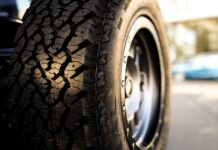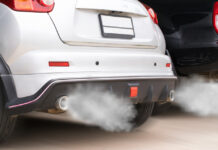As the seasons intersect, heavy rains have become an integral part of our daily lives in recent years. After natural disasters like these, it is important to ensure that your vehicle has the proper maintenance and controls. Let’s take a look at the potential damage to your vehicle from heavy rains.
The water level rising is the first troublesome situation you could encounter. Allow water to enter the engine . Only 20 centimeters of water can reach your vehicle’s undercarriage. The flood level may rise further, reaching the position of the air filter housing. If this happens, water could be sucked into your engine through the intake duct. Although combustion won’t occur if water enters the cylinders it will cause the engine to stop but may cause damage to its internal parts.
In the event Submerge the vehicle. Before you start, disconnect the battery and change the oil and filter.
The housing of the air filter must be dry. It is best to wait for the water, which could remain on electrical parts, sockets, wiring, and cause short circuits, drying completely before reconnecting the battery. Many electronic components are hidden under the seat, trunk, and under the hood. They can become damaged from water, and may cause problems in other systems.
Remember! Water infiltration into the electrical system can cause the greatest damage to your vehicle. Water entering the electrical system can cause serious problems. Not only are immediate problems caused by water and debris in electronic connectors and components, but also corrosion over time can cause serious damage.
After the battery has been connected, start the engine and take out the spark plugs. This will drain any remaining water from the cylinders. Next, replace the spark plugs. Finally, start the engine. After the engine has been running for a while, it is time to change the oil filter and engine oil.
Even though it is closed, water can enter the fuel system. If this happens, the engine may not start or perform poorly. The fuel system corrosion can cause gradual degradation in vehicle performance, even after filling up the tank. If you have any questions, please contact us. Water can get into the fuel system of your vehicle. Empty the fuel tank, and add new fuel.
Driving can also cause a decrease in braking performance. The braking performance may be temporarily affected by sediment carried by floodwaters. Water can leak into the brake system when the front wheels and brake master center are submerged beneath water. The brake system relies on the incompressibility and force transmission of the brake fluid. Water, on the contrary, lowers brake fluid’s boiling point, reducing its compressibility. The brake fluid’s temperature rises rapidly and as a result the liquid becomes gas. There is still some water vapor in the fluid. You can compare the operation of brake fluid with water vapor to a balloon filled with air. As the balloon responds to force, changing its shape, and transmitting this force partially, brake fluid’s shape changes when pressure is applied. The brake fluid is now compressed. This will decrease the braking efficiency, increase the braking distance, and can cause injuries or even death. Although it is rare for water to leak into brake fluid, it is important to inspect the fluid and replace any that are damaged.

















